From "I Vignaiuoli dei Colli Bolognesi" of Federico Aldrovandi
-
 Used as we are to living frenetically the present and to wait for the future with impatience, a person like Virgilio Sandoni today could appear almost from a different time, so far away is his conception of life from the stereotypes which modern life so often imposes on us.
Used as we are to living frenetically the present and to wait for the future with impatience, a person like Virgilio Sandoni today could appear almost from a different time, so far away is his conception of life from the stereotypes which modern life so often imposes on us.
When I decided to produce this book I thought that 'vignaiuoli' (men involved in the cultivation of the vineyard and production of wine) like him no longer existed, or even, they had never existed. It was not true. -
 In the hills of Castello di Serravalle, in the area of Bersagliera, is the site of the wine cellar of someone who is one of the most serious, cultured, passionate and romantic producers in the whole area. As often happens, life took our man to be a 'vignaiuolo' more through choice than through calculation.
In the hills of Castello di Serravalle, in the area of Bersagliera, is the site of the wine cellar of someone who is one of the most serious, cultured, passionate and romantic producers in the whole area. As often happens, life took our man to be a 'vignaiuolo' more through choice than through calculation. -
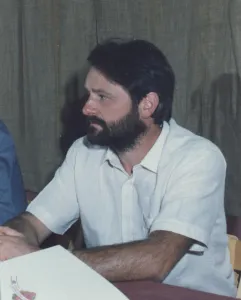 It is 1971, when he loses both his parents at the same time; lifelong farmers and landowners of a vineyard of one and a half hectares, amongst other land, just finished being set up.
It is 1971, when he loses both his parents at the same time; lifelong farmers and landowners of a vineyard of one and a half hectares, amongst other land, just finished being set up.
Virgilio, fresh from studies in philosophy, finds himself facing a very dramatic crossroads: to continue the work of his father or to abandon everything, to end his studies and immerse himself in the academic world.
With hindsight one could say that the choice to stay in contact with the land has been the right one, but back then, if one puts oneself in the shoes of a young man who knew perhaps everything about the philosophy of Plato but nothing about how one pruned a vineyard, it was plausible some serious doubts would make themselves heard.
Above all, a choice made in the years in which the countryside was systematically abandoned and the rural social fabric disintegrated (whereas a job in the city, well-paid and secure) may not have been a utopia.
Still today, Sandoni remembers that choice as one of the most painful of his life. -
 And it is in this way, that out of the blue, Virgilio ends up with shears in his hand and a bricklayer's trowel ready to build his small cellar for wine-making.
And it is in this way, that out of the blue, Virgilio ends up with shears in his hand and a bricklayer's trowel ready to build his small cellar for wine-making.
In 1974 his first wine, made by real craftsman-like methods and with grapes which others did not buy from him because considered poor quality, only sold unbottled.
There still is not a clientele in the area that asks for bottled wine but the quality is very good and almost fanatical the care of the vineyard and that of the wine-making process.
Really scrupulous selection of well-ripened grapes and no use of clarifying agents or preservatives do the rest; in the course of a few years the wine of Sandoni is amongst the most appreciated.
-
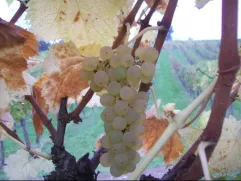 Perfectly conscious of the limits of his 'theoretical wine-making knowledge' he takes trips at different times of the year to understand the various types of production in all the great traditional wine-growing areas both in Italy and France and he remains impressed, above all, by the great similarity between our hills and those of Sauternes.
Perfectly conscious of the limits of his 'theoretical wine-making knowledge' he takes trips at different times of the year to understand the various types of production in all the great traditional wine-growing areas both in Italy and France and he remains impressed, above all, by the great similarity between our hills and those of Sauternes.
There, Sauvignon plays the lord and master, the vineyards are spaced out from woods of acacia from which they obtain, like us in the past, support poles for the vineyard;the altitude and the climate are similar to those of Castello di Serravalle. -
 The desire is strong in him to achieve a wine inspired by that produced by our cousins and tasting his Sauvignon aged in barrels some analogy with Sauternes is not difficult to note.
The desire is strong in him to achieve a wine inspired by that produced by our cousins and tasting his Sauvignon aged in barrels some analogy with Sauternes is not difficult to note. -
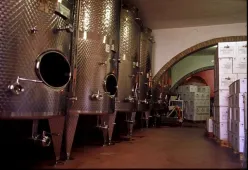 The clients, however, also want above all fine, clear, semi sparkling and impeccable wines. A little reluctantly, and only to balance the books, Sandoni also makes a semi sparkling Barbera and a semi sparkling Pignoletto and he buys all the most modern equipment for this purpose.
The clients, however, also want above all fine, clear, semi sparkling and impeccable wines. A little reluctantly, and only to balance the books, Sandoni also makes a semi sparkling Barbera and a semi sparkling Pignoletto and he buys all the most modern equipment for this purpose. -
 Over the years his wine, including a Cabernet Sauvignon and a Barbera aged in barrels, a still Pignoletto and a Chardonnay made into wine in stainless steel, reap success ahead of their time and a little against the inclination of local tastes, even if perfectly in line with those of a more broader international overall view of wine.
Over the years his wine, including a Cabernet Sauvignon and a Barbera aged in barrels, a still Pignoletto and a Chardonnay made into wine in stainless steel, reap success ahead of their time and a little against the inclination of local tastes, even if perfectly in line with those of a more broader international overall view of wine. -
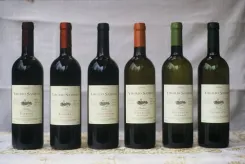 Allergic to too many cold bureaucratic practices and impatient of the insipidness of who wants to interfere limiting his free spirit of scrupulous and honest entrepreneur, not having perhaps a very malleable character and refusing proudly to respect empty rules, useless in his opinion for the attainment of the utmost quality, Sandoni decides by the 2001 harvest to no longer present his wines as D.O.C. but to re-classify them with Indicazione Geografica Tipica 'Emilia'.
Allergic to too many cold bureaucratic practices and impatient of the insipidness of who wants to interfere limiting his free spirit of scrupulous and honest entrepreneur, not having perhaps a very malleable character and refusing proudly to respect empty rules, useless in his opinion for the attainment of the utmost quality, Sandoni decides by the 2001 harvest to no longer present his wines as D.O.C. but to re-classify them with Indicazione Geografica Tipica 'Emilia'. -
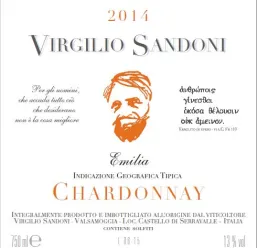 Analogous topic valid for the labels; tired of hearing it said that they were anonymous, that they did not communicate his philosophy of production, that they were ugly, one fine day he decided to take his passport-type photograph and to put it on the label of Chardonnay, not an exhibitionist gesture but provocatively of great dignity and honesty; I am in this bottle, it means, that with my hard work, my anxieties, my few certainties, my willingness to confront.
Analogous topic valid for the labels; tired of hearing it said that they were anonymous, that they did not communicate his philosophy of production, that they were ugly, one fine day he decided to take his passport-type photograph and to put it on the label of Chardonnay, not an exhibitionist gesture but provocatively of great dignity and honesty; I am in this bottle, it means, that with my hard work, my anxieties, my few certainties, my willingness to confront. -
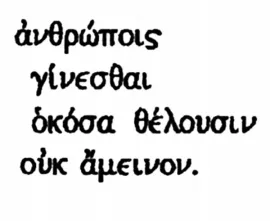 In each of his bottles is clearly visible a phrase of Eraclito di Efeso: "It is not the best thing for men, that everything they wish for, actually happens".
In each of his bottles is clearly visible a phrase of Eraclito di Efeso: "It is not the best thing for men, that everything they wish for, actually happens".
If we taste his Kaos, Pingnoletto raised in 'barriques' and made sparkling by the long Charmat method, or we breathe the scent of his beautiful wine cellar, we are soon aware that for us, the best thing has been that Mr Sandoni, at the appropriate time, decided to be the Philosopher-Vignaiuolo (Wine-Maker).